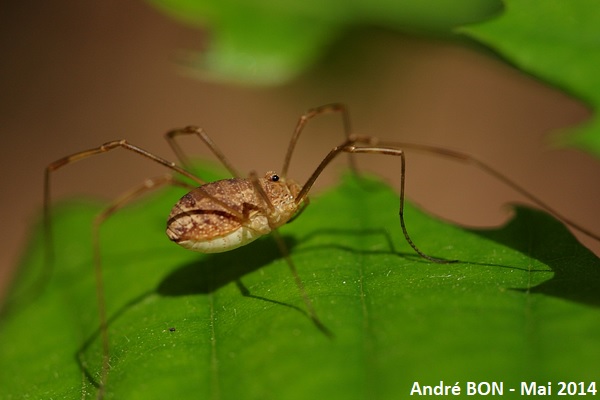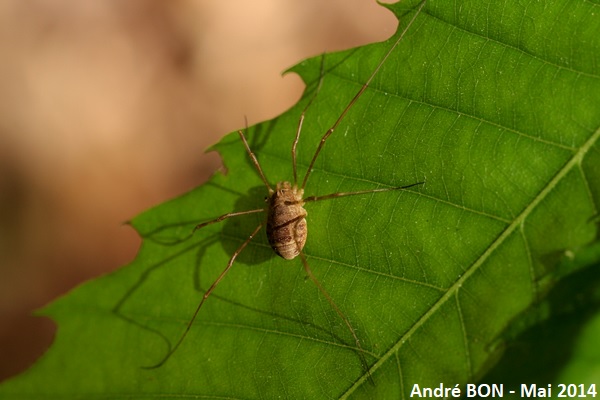


| Spring Harvestman (Rilaena triangularis (Herbst, 1799)) |



|
|
Scientific name: Rilaena triangularis (Herbst, 1799) Common name: Spring Harvestman French name: Faucheur triangulaire, Faucheur cornigère. Order: Opiliones Family: Phalangiidae Size: 3.5 to 5 mm for males, 5 to 7 mm for females. Biotope: Woodlands, parks, gardens, bushes. Adults climb on high grasses, bushes and low branches of trees. Juveniles are observed down in the litter. Web: No web. Observation period: Adults are observed from late March to July. Unlike many harvestmen which overwinter at the egg state, Rilaena triangularis overwinters at the juvenile state. That's why this is one of the first harvestman you can observe at the adult state in spring. This is the origin of its English common name. Geographic area: Europe, north to Finland and east to western Russia, missing in the Iberian Peninsula. Introduced to North America. |
The Spring Harvestman is a rather robust harvestman. It is pale brown coloured with small pale spots. The legs are rather long. The rather large ocularium has the particularity to be as wide as long. The large black eyes are each below a row of blunt spines. The body shows a slightly darker saddle outlined with a lighter colour. The lateral edges of this saddle show very low marked angles and so appear almost straight. The pedipalps are spiny and bear small apophyses. The legs are ringed. Among similar species, Platybunus pinetorum shows a clearly wider than long ocularium. The ayes are circled with black. The underside of the pedipalps' femurs shows a series of long teeth which exceed the diameter of the femur in length. Rilaena triangularis also shows these teeth but they are shorter than the diameter of the femur. |
| [To know more about the Spring Harvestman] [Next picture] [Top] |

|
The habitat, the overall colour, the square shape of the ocularium and the almost straight lateral edge of the saddle allow to identify the Spring Harvestman species with a good level of confidence. |
| [To know more about the Spring Harvestman] [Next picture] [Previous picture] [Top] |

|
Upper side view. The next challenge is to shoot a close-up picture of the pedipalps to observe the apophysis and the teeth on the underside of the femur. |
| [To know more about the Spring Harvestman] [Previous picture] [Top] |

|
You can see the teeth on the underside of the pedipalps' femurs on this picture. |